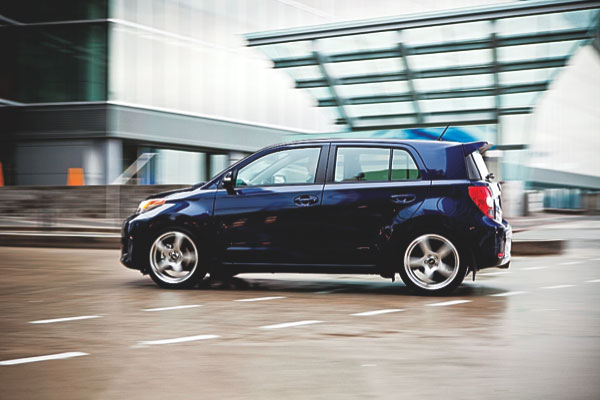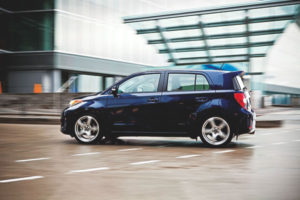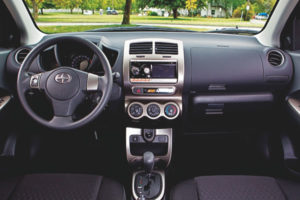Nick Maronese
Senior Staff
Happy birthday, Scion.
It’s been just over one year since Toyota launched their new compact car brand in Canada.
But I probably don’t need to tell you that, do I? You’re part of the youth market they’ve been targeting over the past 12 months—you should know about Scion’s birthday, according to Toyota’s marketing team.
You’ve probably seen the print ads, been handed some Scion swag somewhere, maybe even visited their trendy website.
But you’re not buying them.
The entire Scion line—the xD, xB and tC—moved only 3,637 cars as of September this year; that’s not a lot compared to the rival Hyundai Accent, which sold 17, 810 cars, or the Ford Fiesta’s 10,840 sales.
Is the brand’s marketing strategy not working? Is it their one-trim-size-fits-all approach? Could it be the cars themselves?
I wanted to find out. Luckily I had a chance to pilot a new 2011 xD around Toronto Motorsports Park in Cayuga, Ontario a few weeks ago, during an advanced driver training course.
To be honest, I wasn’t expecting a lot out of a $17,200 car—so I was in for some surprises.
My test car came with the standard keyless start, air conditioning, and power windows and doors common to all Scions. The seats were comfortable, though I could’ve used an up-down seat adjuster; headroom was a little tight.
The whole interior was covered in a tacky, pebbly textured plastic, and attention to detail was hit-and-miss. A bit of Scion trivia: the felt cupholder liner is not glued down.
The dashboard and audio controls were well laid-out though, and I liked the neat-looking tachometer.
I didn’t really need the tach, however. My Scion had an automatic transmission channelling 128 horsepower out of a 1.8-litre four-cylinder. It wasn’t quick—it took an embarrassingly long time to get to 100 km/h on the track’s straights—but had ample “go” for city driving.
The xD was nimble through the corners, and handled relatively smoothly. Steering was tight and firm.
I didn’t measure it, but fuel economy figured roughly in the advertised 42 mpg (6.8 L/100km) range, which is, I have to admit, quite impressive. After a weekend that included about four hours of highway driving, a full-day on-track and some city driving, I’d put about $50 worth of gas in it, topping it off only twice.
But then there’s the car’s looks. Scion brags that the xD is something that stands out, but the guys with their tuned Volkswagens and Hondas out at Cayuga didn’t give it a second glance.
Of course, I was driving a red, pedestrian base model—standard 16-inch wheel-covered rims and all that. None of those gorgeous 18-inch five-spokes (pictured) for me.
You can personalize the heck out of these cars though, with factory aftermarket lowering springs and wide-body kits courtesy Toyota Racing Development (spelled TRD, but not pronounced “turd”).
I wouldn’t have thought twice about the car’s simple, unassuming appearance if they hadn’t made such a point of it.
But overall the car represented a pretty good value; all of this comes in at under $20,000. That’s within the range of at least some York students.
So why hasn’t the college market jumped at these made-for-them trendy cars?
Probably because they’re not really buying any cars these days.
Twenty-somethings today don’t aspire to own cars, unlike the twenty-somethings of previous generations, for whom a car meant everything. In 2011, a 16-year-old is more likely to go stir-crazy over some new Apple gadget than the chance to get a driver’s licence.
Cars don’t have the pull they once did, no matter how you market them or what sales figures you aim for; in short, Scion missed the youth demographic because there wasn’t one to aim for.
John LeBlanc recently compared Scion to the now-defunct GM-birthed Saturn brand, which also promised to take things in a new, trendy direction.
It did for a while, then cooled off and died away.
As great as Scions like the xD are, they don’t really stand a chance against a market apathetic to cars and car culture.
With files from Scion Canada and John LeBlanc’s Crank at thestar.blogs.com




